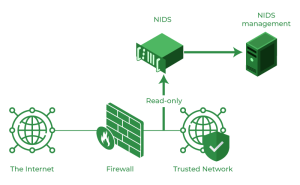Public transportation networks have become vital for contemporary urban societies because they give millions of people globally efficient, accessible, and sustainable transportation alternatives. These systems vary strongly in terms of their infrastructure, technology, management tactics, and overall performance. In this discussion, we will examine public transportation systems from various parts of the world, concentrating on important factors like as efficiency, accessibility, and sustainability.
Efficiency:
Efficiency is an important consideration in assessing the effectiveness of public transportation systems. It includes factors like dependability, frequency, journey duration, and capacity usage. Cities having large networks and dependable service provide some of the world’s finest public transportation systems.
Tokyo’s public transportation system, for example, is well-known for its punctuality, reliability, and extensive coverage. The city features a comprehensive network of trains, subways, and buses operated by several companies, allowing people to reach their destinations quickly and conveniently.

Similarly, cities such as Singapore and Hong Kong have efficient transportation networks that are distinguished by seamless integration, cutting-edge technology, and excellent management techniques. These towns use smart technology like real-time tracking, automated fare collecting, and predictive maintenance to increase efficiency and the overall passenger experience.
On the other hand, some regions need help maintaining efficient public transportation systems due to factors like inadequate infrastructure, overcrowding, and funding constraints. Cities in developing countries often need help to meet the growing demand for transportation services, leading to issues such as delays, overcrowded vehicles, and unreliable schedules.
Accessibility:
Accessibility refers to the ease with which people can access and use public transportation services, especially for individuals with disabilities, seniors, and those with limited mobility. A truly accessible transportation system ensures that everyone, regardless of their physical abilities, can travel independently and comfortably.
Cities such as London and Stockholm have been praised for their efforts to provide inclusive public transit systems. To help disabled passengers, they created low-floor buses, ramps for wheelchairs, tactile pavement, and auditory announcements. Additionally, some cities feature accessible stations and platforms with elevators and ramps, allowing for seamless transfers between modes of transportation.
Conversely, accessibility remains a serious concern in many areas of the world, particularly in poorer countries where infrastructure improvements and accessibility measures are frequently missing. For disadvantaged people, a lack of access to public transit can result in social marginalization, economic hurdles, and limited mobility alternatives.
Sustainability:
Sustainability is an important concern in modern public transportation design, considering the environmental impact of transportation systems on air quality, carbon emissions, and energy usage. Sustainable transportation seeks to reduce dependency on fossil fuels, encourage alternate forms of transportation, and limit environmental deterioration.
Cities such as Copenhagen and Amsterdam are regarded as world leaders in sustainable transportation. They promote cycling, walking, and public transportation as key forms of transportation, resulting in less vehicle reliance and fewer greenhouse gas emissions. These cities have made investments in bicycle infrastructure, pedestrian-friendly streets, electric buses, and renewable energy sources to promote greener transportation systems.
Furthermore, initiatives such as congestion pricing, car-free zones, and incentives for eco-friendly vehicles encourage sustainable travel behavior and support environmental goals. Other cities, such as Portland in the United States and Curitiba in Brazil, have also implemented innovative approaches to sustainable transportation, including bus rapid transit (BRT) systems, green corridors, and urban planning strategies that prioritize public transit and active transportation.
Some cities, on the other hand, need help promoting sustainability owing to factors such as urban expansion, car-centric design, and a lack of public knowledge of environmental concerns. These cities frequently endure traffic congestion, air pollution, and environmental deterioration as a result of heavy car use.
Final thought
Enterprise Systems’ networking and communications solutions are critical to improving the efficiency and performance of transportation firms in the supply chain and logistics industry. Enterprise Systems facilitates seamless cooperation among all stakeholders, regardless of geographical location or position in the supply chain, by offering a powerful communication infrastructure that covers numerous channels such as online, mobile, and social media.
Enterprise Systems’ solutions provide several advantages, including persistent high efficiency, on-time delivery, and increased customer/partner satisfaction. Furthermore, these solutions help companies save money by lowering human travel expenses and simplifying processes through better communication and cooperation.
When accurate and timely delivery is critical to a firm’s reputation and client loyalty, Enterprise Systems improve communication skills and promote success across the supply chain. Modern networking and communications technology can help transportation companies stay ahead of the competition, provide superior services, and achieve long-term success.


Recent Comments